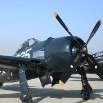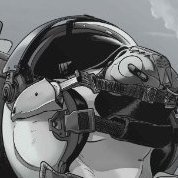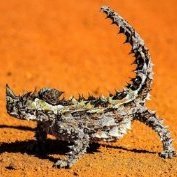Leaderboard
Popular Content
Showing content with the highest reputation on 11/28/2022 in all areas
-
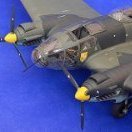
DIY 1/32 Spey Phantom conversion
Model_Monkey and 15 others reacted to tomprobert for a topic
Morning all, Like 99% of those who enjoy building large scale Phantoms, I've been eagerly awaiting a 1/32nd scale RR Spey powered version for as long as I can remember. There is of course the Wild Hare conversion that usually sells for more than my car is worth (on the rare occasion one actually comes up for sale) and rumours are abound that HK were looking at doing one, but I thought life's too short to wait around any longer and it's time to start hacking about at the classic Tamiya F-4J kit. Before I go any further, it's important to say that this is not going to be wholly accurate and the majority of this is being done with the MkI eyeball and approximate measurements. I'm simply not interested in this (or any of my models for that matter!) being accurate to the nearest half-mill, and therefore what you'll see is something that (hopefully) will look like a British Phantom but won't necessarily be the definitive way to go about such a conversion - you'll need to check @Anthony in NZ's rather epic thread for that! I wasn't going to run a WIP for this as I was concerned about burn-out and failure, but I've actually come a lot further in a short space of time that I had initially anticipated, and I think broken the back of this conversion, so thought I'd share my efforts just in case there's someone else out there considering the same thing... I thought I'd begin somewhere nice and simple, so tackled the belly of the beast and the inlet doors on the underside. The UK Phantoms have these further forward than the US examples, so it was a case of cutting out the new doors in their forward position, and filling the old ones with plastic card blanks: These were then filled, re-scribed and given a quick squirt of primer: Step one complete! The next step was the far trickier intakes. The Speys demanded more air and thus the intakes were significantly wider than the US versions. There is much debate and head-scratching about how exactly the shapes differ, but I've done a bit of digging around and modified mine as I see fit. In 1/32nd scale, my calculations work out that the intakes are roughly 3mm wider at the front than the US examples. Therefore, I sourced some 3mm strip and carefully cut the kit intake sections in half, front to back, adjacent to the grills on the inner edges of the intakes (the pictures will explain this better). Here you can see how much wider the UK version intakes are than the US version - quite a significant gap emerges when test fitted to the unmodified rear sections: To remedy this, the fuselage will of course need widening too, and the shaded area in the picture below shows the section in need of modification: To do this, horizonal cuts are made along the top of the intake trunking, with vertical cuts made to allow the section to be opened up. There is a lower horizontal cut, too, made at the wing root to allow to original kit fixings to mate together for strength whilst allowing the wider intake to slot over the upper wing surface: A wedge of plastic card in then inserted, with the forward-most part being 3mm in width to match the modified intakes: Lots of reinforcement was given to the interior too: I'm going to use FOD guards on mine as life is too short to tackle the notorious intake interiors on this kit, but if you were to have them open a further 'wedge' would be needed to plug the gap seen above. Before I went any further, I wanted to check the modified fuselage would allow the wings to fit - which by luck more than careful calculation they did! The modified intakes were then test-fitted to the modified fuselage: Before they were glued firmly into place and allowed to set for 24 hours: The join wasn't perfect but considering the amount of butchery that went on I was pleasantly surprised. Some Milliput White soon made light work of the affected areas: And after some re-scribing and a shot of primer, things look good! You can see in the picture above I have started work on the back end and opened up the extra doors the Spey versions have on the rear fuselage. I'm going a later version with the pod on the top of the fin, so plans were consulted and a rough shape made for these from plastic card laminates: This still needs an awful lot of refining and surface detail added, but it's a good start. I'm now going to have to concentrate on getting the cockpit done and then I can begin hacking about at the rear end. The Spey exhausts are a fair bit bigger than the US ones, so the hacksaw and filler are at the ready! When done, I'll update this again... All the best, Tom16 points -
Thanks John! I have a spare Type II gun sight that I can use... see below! A little more work on the P-47 to report. In preparation of adding some of the Eduard photoetch, the raised details on the cockpit floor need to be cut off. The box, I believe, is the fuel selector and the other is some sort of lever with an actuating rod/wire running to the back of the cockpit. The fuel selector looks like it is mounted on the side of the circuit panel. So I scratched something up using brass sheet and a section of plastic tubing. The cut areas are covered with PE pieces. The lever is also from the PE set but I've not yet fabricated the actuating rod/wire. I like the detail of Eduard's version of the rear cockpit bulkhead. But the headrest on a spacer arrangement doesn't seem to line up with the photos I've been looking at. So I decided to use the Eduard bulkhead without the headrest portion. Next, I folded up the gun sight mount. It's actually upside down in the photo! Instead of the kit part, I used a spare Type II RAF gunsight from Barracuda.16 points
-
Scuffing. Time after time, someone had to clamber up on the wing either to get into the cockpit or to service the guns and motor. Please tell me what you like and dislike about the following series of photographs. I have my own opinions, but would rather here yours, first. This is my second attempt at scuffing. The first time, what I did was barely visible. So, much like most of the other weathering on this model, I pushed myself further. Worst comes to worst, I can sand much of it back even though it is already matte coated. If I hadn't applied a matte coat, you wouldn't be able to see anything. Thank you in advance, for your input! Cheers!11 points
-
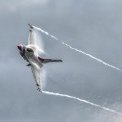
New Group Build starting December 1st - Turning Japanese
Alex and 8 others reacted to Stokey Pete for a topic
Decals ordered, kits being prepared for the conversion. This is happening, giving me a nice break from the Viper Pit build. image from “airplanepictures” site.9 points -
Almost finished with this one. A friend is still printing some antennas for me and that will then be it. Here are some quick phone pics. Some super high mag pics of the cockpit A friend of mine printed the canopy locks, other than that the frame is scratch-built And this is how I'll display here at the Belgian convention in two weeks time... well, hopefully with the missing antennas Will be hangin' with the Scale Navy team, can't wait! I'll take and post some better pics once everything is truly finished. Cheers, Marcel8 points
-
7 points
-
Shoki-t to me, Baby!6 points
-
Hasegawa 1/32 Bf109F-4 Trop, H. J. Marseille
Scotsman and 5 others reacted to Nikola Topalov for a topic
Some more office work:6 points -
As the title suggests, it is any and all aircraft in Japanese markings. Captured aircraft in Japanese markings and those on the civil register are included. Hope to see you in the group build!5 points
-
This has been hanging around for a while, Ben Standen, did the original CAD work, the files are printed as can be seen, I need to do some corrections and add surface details. The canopy is still the biggest challenge, but I have some trial parts in development for this. I intend to resin cast the major parts, the smaller parts and the cockpit details will be 3D printed parts along with some decals. I am wanting to keep the price as competitive as I possibly can and therefore at this stage I am not intending to do engine detail, other than a cylinder detail that can be seen through the intake. I intend to offer separate flying surfaces, but what is the thought on the flaps being separate parts, as when parked I think that they are mostly in the neutral position. At this stage I cannot commit to a release date, but realistically it would be summer 2023.5 points
-
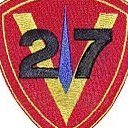
You have 2 cows...
Jan_G and 4 others reacted to D.B. Andrus for a topic
Economics explained Alert: Contains humor!!5 points -
De Havilland thread, Eh? I'm in. Might be 2023 for this to kick off. Just came in the door today. Anyone with interior shots of the U-6 US Navy version? That's my thinking for now.5 points
-
Hey guys, I am not a moderator and do not pretend to be one, but I would much prefer to see everyone discussing the models than taking swipes back and forth as to how much people choose to sell items for. you decide a price, if somebody pays that price or bids up to a price then it is up to them, no one forces anybody, it happens everyday in life HOWEVER CAN WE KEEP THIS TO LIGHTNINGS5 points
-

MQ-8B Fire Scout - Brengun, 1/32
Fanes and 4 others reacted to Starfighter for a topic
More progress on the Reedoak figurines. The show is approaching fast... They are still in progress, lots of detail painting is still missing. I'll use decal stripes for the reflectors, as usual.5 points -
Trumpeter A-6A "VA-65"
chrish and 4 others reacted to jeroen_R90S for a topic
Thanks again Jari, I just keep being amazed where you find this stuff! On careful inspection those 2 little black patches/holes are present on the Trumpeter kit, mystery solved it seems! Fortunately I have some good news to report, as thanks to my metal tube reinforcement and the removal of the ridges/end stops on the idler mechanism, in combination with (finally) the installation of the fairings which add positive guidance I can now install the wings without much fuss and they stay (albeit wobbly) in place witout the rod. If it weren't for some parts needing to between the inner and outer parts I could even have gotten away with leaving them separate. No glue or anything here: I finished the last of the PE parts, and added hydraulic wires (they are in the PE set but simply flat) -they should go behind the actuators but alas, they are cast in the outer frame so I used some artistic freedom and drilled some holes in te pylon to make them end somewhere. Don't tell anyone There are also some (electrical?) cables running between the inner and outer parts, as wel as a few plastic parts that'll need to be installed after final installation (near the end I tried one, and they all fit), so this part of the model isn't holding op going to paint any more. I also fidded with the fuselage speed brakes, Trumpeter will have you install them fullly open (or closed) but they seem to droop with time so I wanted them slightly open. After the wing folds, nothing too challenging, just some careful measuring, cut, trim, and glue together. Of course I forgot the before picture to show how much I removed... and a dry-fit with the speed brakes installed: I had thought to close them a bit more, but realized you can't see al lot of the insides any more afterwards, so I compromised a bit. Another little task off the list! I have also cleaned and degreased the flaps etc as I need to paint some of that before final installation. Jeroen5 points -

Minicraft 1/48 Beechcraft Bonanza
Alain Gadbois and 4 others reacted to chrish for a topic
All done...I think. The real deal; Creative critiques welcome (only way to learn) Thanks for looking5 points -

You have 2 cows...
Rick Griewski and 3 others reacted to thierry laurent for a topic
I loved the venture capitalism one!!!4 points -
DIY 1/32 Spey Phantom conversion
Derek B and 3 others reacted to Anthony in NZ for a topic
LOVE IT!!! Tom, I’m so pleased you’re tackling this monster and so far looks fabulous! Don’t forget Ali does those bits that will save you some time with those engines. What scheme are you after? I might be able to help with spare decals? Or anything else for that matter. Just let me know if I can help cheers Anthony4 points -
Progress on the figures continues. This oil paint has dryed. For once I won't have to make any corrections, the oils dryed to a very nice satin sheen that replicates actual leather nicely. The only thing left to do is some minor detail painting. The faces of both figures have been painted. I considered doing a SBS but decided not to bore everyone with the process I use to paint faces with oil paints. If anyone wants an explanation I am happy to give one, I just did not want to come off as some sort of guru. The photo below shows a figure's face after the oil base coat has been painted. And after the highlights and shadows have been added and blended, as well as some pink on the lower lip and cheeks. The eyes were very easy on this guy as he is squinting. No need for irises and pupils as even when viewed from 6" away that is equivilent to 16' and you can't see anything but slits. The other pilot's face before blending. Painting his face turned out to be a bit of a challenge as there is not a lot of it and the casting has a bunch going on in a tiny area. I painted his eyes looking towards the left as the figure is lookiing towards the left. You can see how garish the oils look as they are still very wet. Blending will make this look better. Blended, I kept the contrast stark - not something I normally do - to help give the face character. Once dry the colors will harmonize. The oils have nearly dryed on the figure on the right. I still need to do a lot of work to improve the shadow area on the coat and both shadows and highlights for the boots and scarf. Keeping my fingers crossed that I'll get the same leather effect as the other coat.4 points
-
See my home page under vendors4 points
-
I´m in with a Ki-84 Hayate a.k.a. "Frank"! This; Stefan4 points
-
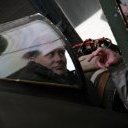
Looks like Trumpeter is re-releasing the F3 and F2a/ F6 Lightning
Rick Griewski and 3 others reacted to Panzerwomble for a topic
For my money ?...good ....I hope he has to sell them for pretty much what he paid - or worse , why not actually go and build them and enjoy modelling . Not everything in life needs to be a rip off, we've got multinationals and governments for that . Too many good hobbies have been ruined by people deciding its a route for their "investment" fantasies. Taken from the hands of those who do it for love, and then bought by people to make a quick buck .4 points -
Airfix announcement - 1/24 Spitfire
Smokeyforgothispassword and 3 others reacted to ade rowlands for a topic
Pete I say go for it. I’m already in for 3, 1 Day Fighter Temperate Scheme, 1 Desert Scheme and then a big Pink FR.IX later on down the road. I am very much in trouble when/if the other Marks are released.4 points -
I have a Tigger “Chipmunk” too, if we’re talking the very basic vacuform offering. In my opinion it’s not very good, I’d rather scratch build one. These drawings which I’ve recently bought highlight just how much work would be necessary to make something presentable from the Tigger one.4 points
-

New Group Build starting December 1st - Turning Japanese
Gazzas and 3 others reacted to D.B. Andrus for a topic
OK, I'll give it a try with a Ki-84. Cheers, Damian4 points -
Got my copy today. Wow!!!!! What a tribute to a great plane. Go 1/24!!4 points
-
MiG-23 MF TRUMPETER
thierry laurent and 3 others reacted to IrekM1 for a topic
Well, the end of the year until the time of summaries and farewells. That's why after making 3305 elements, that's what I got out of my notes, and there's definitely more The model has about 6 thousand elements. Time for photos: Floor the plane the model 126 elements front of the wall: the model: rear shelf and here it should be noted that individual planes could look different. Mine looks like the original plane number 460 in 460 the model aggregates before add wireles completted I'm starting putting everything in its place. very small foot consists with 14 elements on the model Next step -hatches where the sash hides when folding and the entire mechanism of controlling the variable geometry of the wings. Trained eyes have already seen the actuators. I will draw everything on graph paper and only after planning and drawing will I start assembly so as to touch the model as little as possible4 points -
Longish update today. I am going to go step by step painting one of the leather coats using artist oils. Hopefully some folks will find this useful. I have gathered the materials that I plan to use. I won't be using all the paints shown, and will probably grab another tube or two as I progress through the process, but this is how I always arrange things before painting a figure. Having several colors and shades of paint together helps me visualize the effect I am trying to achieve. I will give the figure's clothing areas a dark wash - I use a different technique for flesh areas. The wash will strengthen the effect of the black undercoat and help show the areas I plan to add highlights to. I used a very dark brown instead of straight black to get a more subtle contrast. This is a matter of taste, some figure painters like a more pronounced dilineation of colors. I have added the wash to both figures to save time. The light is reflecting on the still very wet figures. This is how they look after drying them for 5 minutes using a blow dryer. They have a nice contrast between the shadow area and those to be highlighted. Now I lay in the base oil color. In this case straight Burnt Sienna. The paint is applied using a Number 2 brush for coverage. A good quality brush like the one shown allows you a high degree of control to ensure coverage while avoiding brush marks or getting paint where you don't want it to go. With oil paints less is more. You want a somewhat translucent effect. This avoids both brush marks and longer drying times. Next I'll use the following colors to add warm highlights. I use a very small (tiny) amount of green to kill the reddish tint of the base color. I like to use cardboard for my palette. It leeches a lot of the linseed oil from the paint which helps shorten the drying time; which is still going to be many hours - up to a couple of days. This is both an advantage and disadvantage to using oils. The warm highlight, for this base color and effect I'm after, will be Gold Ochre mixed into the base color. I set aside some of the base color for use in case I have to make any improvements. The warm highlights have been added. I used a Number one brush for this. On both 1/35 and 1/32 scale figures you can use a good Number one brush to both paint the areas to be highlighted and, because the area to be blended is large - compared to a face - you can use that brush with most of the paint off it to blend the paint. Now I'll use some Titanium White added to the highlight mix, again after setting aside some of the warm highlight color for possible use later. This will give me the cold highlights which will only be added to the highest areas on the figure such as the top of creases and folds or the top of the shoulder. Cold highlights have been added. I forgot to mention that I used the warm highlight color to paint the boots and fur of the coat as they are the color that fit well with that particulair shade. Here those two areas have also recieved the cold highlight color. The final step I do is to blend any areas I think need more attention with the tip of a Number One brush; again very good quality brushes are a must for this. The photo below shows the completed figure - I left out the steps I used to paint the gloves as they are exactly the same. It still looks very garish. When I started painting figures using oils this always alarmed me as it does not look so good at this point. However, as the oils dry they harmonize very nicely. This below photo shows the figure after spending about 10 hours in my drying box, (A simple little box, lined with white paper and a hole cut in the top to insert a small lamp with a 60 watt bulb. Even though the paint still needs to dry more, you can see how much better the figure looks even at this incomplete drying process point. I should only have to make some very minor corrections, if any, when it is completely dry.4 points
-

Make the others jealous
Rockie Yarwood and 3 others reacted to thierry laurent for a topic
Hi, As requested, here is a small set of pictures of that vintage Preiser kit of the Alphajet. Many years ago, I nearly purchased one on ebay but finally another LSP guy (Iain!) got it. Finally, I succeeded in finding one. Only one white metal tank winglet was missing. Not a big deal. The box is immediately showing this is a very old kit. The date inside the resin fuselage shows... 1976!!! Jeez... this is very probably the oldest resin kit I ever got! The injected resin is very lightweight. I've never seen that but this is a very positive point. Moreover, the LG is quite sturdy even if I'm not very fond of white metal wheels. Contents are very basic to say the least. This will ask for rebuilding multiple things. Look at the seats. You just get one white metal part for the top! The most annoying item is probably the canopy. The good point is the fact it is in injected plastic and very clear. The bad point is the thickness: 2mm...ouch! I still do not know what I will do with that. The Fliegerhorst kit has three good canopy vacform options but that one is not in the same league! Too bad but there are solutions. This will simply be time-consuming to solve. The decals are probably unusable but as they were too basic for a large scale plane, I do not really care. If I had to choose a scheme right now, this would probably be the grey/blue Top Aces one. This also allows recycling MB Mk.10 seats. They are somewhat different from the Tornado, Hawk or Mirage 2000 ones but at least some resin ones can be converted. Otherwise, you need to make older Mk.4 or even Stencel seats (as used in the Luftwaffe birds)! There are also some strange kit features: there are holes in the wings for the four pylons but the model only has two! They give an alternate round nose but the typical Luftwaffe gun was cast with the fuselage! Etc. The plan is really dated as well. Not for the faint at heart if you want to get an acceptable result... However, there are not many available options! An interesting project with challenges! I guess that as I just found one we will get soon the announcement of a plastic release!4 points -
I have a Tamiya Spit Mk XVI in the stash and since there is not all that much interest in this Group Build I decided to pitch in with this one. It will be out of the box and hopefully finished by the end of the deadline. A couple of years back a fellow modeler build a Tamiya P-51 in a week to make the end of year contest, so 3 months should be doable. The SAAF received more than 140 Spitfires after the Second World War and all were Mk IX's. The configurations differed as there were high back and low backs as well as clipped wing and normal wing configs. Some were LF and some HF subtypes. The Spits initially equipped 1, 2 and 60 Squadrons. By 1950 the Air Operations School at Langebaan were using many of these to train pilots for the Korean conflict. Given the large amount of spitfires in the SAAF at the time very few photos of the type from the late forties and fifties survive. Here is one from 1 Sqn SAAF which I found on the net. So here goes. Cheers Nick3 points
-
1/32 Hasegawa-Paragon-Warbird Spitfire Mk.XII
Rockie Yarwood and 2 others reacted to Tolga ULGUR for a topic
Hi, This is 1/32 Spitfire Mk.XII with the markings of EB-B MB882 from No.41 sqn RAF Tangmere, Sussex England in October 1943 The base kit is Hasegawa Spitfire MkVb. I have used Paragon Spitfire Mk.XII conversion set with Warbird universal resin C wings Other additions used in this Project are as follows: - Eduard instrument panels and seat belts - Barracudacast resin seat - Barracudacast Spitfire cockpit parts - Grey Matter Spitfire ventral lower wing part - Grey Matter main wheels - Master Details horizontal tails - Barracudacast pilot Access door - Archer fine Transfer surface details fasteners - SAC landing legs Paints are Gunze and Tamiya acrylics Roundels are from spare parts of DK decals. Customized Fuselage codes (EB-B) are from Customhobbydecals Australia. Serial numbers and letters (MB882) are from Xtradecal. Cockpit mirror , beam approach antenna, ventral tank and its hooks are from Tamiya spare parts. You can see the full build story in WIP section by using the following link; https://forum.largescaleplanes.com/index.php?/topic/94471-finished-132-spitfire-mkxii-hasegawa-paragon-warbird-grey-matter/ Happy Modelling3 points -
I've done a bit of culling here on the personal stuff, lets keep it to the Lightning kits please. This is not the place for personal digs back and forth.3 points
-
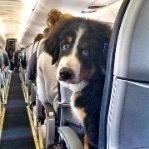
Delta 1555 - Microsoft Flight Sim Boston to Orlando
Lenny320 and 2 others reacted to Pete Fleischmann for a topic
It’s funny- I’ve turned into the old captain that I used to make fun of when I was the new guy. Not surly or grumpy..but someone who literally stopped counting their flying hours at 20,000..comes down final with their reading glasses perched on their nose -has seen 10 different management groups and 5 different paint jobs on the jets. it’s easy to forget how lucky I am, or how special flying is when you are grinding through the routine…I do love it, but I’ll be ready to retire when it’s my time- P3 points -

Robin Koh Chipmunk?
Archimedes and 2 others reacted to mozart for a topic
There's a lot of deserved excitement right now about the imminent issue of the Revell Hurricane and the Kotare Spitfire, but another plane which is on my bucket list is the Chipmunk. Robin Koh produced a resin kit which looks lovely. I emailed Robin last week enquiring if it is still available but had no response to date, anybody else any knowledge or thoughts?3 points -
Thanks Max - may have to order a set of those. I really want to build a few large scale Chipmunks - here's our 'Supermunk'. Iain3 points
-
I've haven't ruled it out completely Guy but by 'eck it would be a challenge!! As an ex-ATC cadet the Chippie was my first experience of parachutes, stall turns, loops and rolls so yes, it has a special place in my heart. Not to mention that it was made by de Havilland. There are a couple at the Old Sarum museum which isn't far from me so gathering detail info isn't too difficult. I just wish Airfix did 1/32 scale though, 1/24 doesn't do it for me in the slightest.3 points
-
Hi Gary, continued superb work on the 109. I think the scuffing looks just fine. I used to worry a lot about how things looked when viewed in macro images or through my optivisor thinking that I had overdone things. I then redid the work to scale back the effect(s) only for it disappear when viewed at normal viewing ranges and magnification because I was far too conservative reapplying things. I now always look at what I have done without my optivisor and from ranges of 1 - 5 feet before I decide on any corrections/changes. Figure faces are a good example, when I look at my work in say a super macro I almost always think, "What a hot mess!"; however, when viewed at normal distances it the face looks great. HTH, Ernest3 points
-
Hasegawa 1/32 Bf109F-4 Trop, H. J. Marseille
Paul in Napier and 2 others reacted to Nikola Topalov for a topic
Hi Antonio. Thank you, I am glad that you like it so far. As for the seat, it was a tricky question for me as well so I searched around for some answers. It looks like the early F4s had the same seat as the F2s. Hasegawa only shows this option in the instructions, although you get both seat types in the kit. Here is a picture of Marseille with clearly a high backrest seat sticking out behind him:3 points -

New Group Build starting December 1st - Turning Japanese
GeeBee and 2 others reacted to Stokey Pete for a topic
I’m now looking for a JASDF Aggressors sheet for my F-15. I’ve long fancied painting one in the yellow/brown/black splinter scheme.3 points -
I'll be in, building a Ki-43 Oscar to go with the kit I'll be doing for the On the Nose GB.3 points
-
2023 Group Build Poll
Archimedes and 2 others reacted to BradG for a topic
Yes the 4th is Hasegawa LSP's.3 points -

SB Lim-2, Polish Air Force (Polish-built MiG 15UTI)
Martinnfb and 2 others reacted to R Palimaka for a topic
Thank you again. That's the impression I'm getting about the Trumpeter MiG-17 kits, that it would take a lot of work to make it accurate. My plan was to do as Meindert did and build a Mig-17...or Lim-5/6...out of what was left. We'll see how I feel after I finish this one. I can understand what you're saying about correcting the tail. I've seen a correction to the MiG-15 tail just using plastic card and Milliput and it didn't look that difficult. Maybe you did choose the path that causes less stress. This is a quick phone photo of the MiG-15 kit tail posed on top of the resin correction from Grey Matter. The base of both vertical tails match exactly from leading edge to rudder hinge-line. The kit tail however starts to sweep back more and becomes narrow at the top, and slightly short. Also causes the horizontal stabilizers to be too far back. The resin tail dimensions match the drawings, and look more like the photos. Have to say though, that the resin correction is missing some panel lines, rivet lines and a couple of small panels. Nothing some time with a scribing tool won't fix. There's still the matter of the best way to attach it securely to the fuselage, and align all of it. But...are we not modellers? Or mere assemblers lol.3 points -
Nice Tires. (or Tyres!)3 points
-
Just a few pics of the USAF museum, we took a "truckload".........
Alain Gadbois and 2 others reacted to Jack for a topic
And that's all for now, i have more pictures, but this is sufficient to get an impression, take care.3 points -
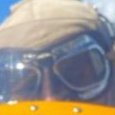
Is the era of weathering over?
tucohoward and 2 others reacted to Warbird for a topic
With regard to model painting, esthetics is highly subjective. Realism is in my opinion much more objective. Take a photo of your model outside, under natural light and from a good angle and close distance - if it looks like your reference you can probably consider it as "realistic". "Spanish school" models can be amazing from a technical point of view but they aren't realistic at all. When it comes to photographic references, a common pitfall (especially for late war German subjects) is the use of reference photos of planes dumped in junkyards or abandonned in the nature - sometimes for months or years. This introduced a biais toward excessive wheathering I think (e.g. Me 262). Also, crap is not the same as wear and tear. A brand new aircraft can be very dirty but paint tonal variation will be almost null (or only due to dirt). An plane with hundred of flight hours will probably show tonal variations but could be perfectly clean.3 points -

The ‘Viper’ pit - A short break to build other stuff.
Jim Barry and 2 others reacted to Stokey Pete for a topic
The base paintwork is just about done. On to a bit of post shading and washes. I’m thinking of taking a little break before I get into the final 2 jets. They’re complex paint schemes, and I don’t wanna go into them while feeling a bit jaded from the project. While I’m up to my eyes in F-16 parts and paint, I took a little time out to do a scratchbuild with my daughter. I present the ORB-18 Utility Helicopter.3 points -
The info in this thread is fantastic! Cheers, Tom3 points
-
Finished !! 1/32 Spitfire Mk.XII ( Hasegawa + Paragon + Warbird + Grey Matter )
Landrotten Highlander and 2 others reacted to Tolga ULGUR for a topic
The propeller blades have been fixed.3 points -
Thanks Maru! Before I move over to the cockpit, I wanted to check those mid-fuselage vents to see how the supercharger assembly affects the view into the opening. As you can see, the opening just drops off into the fuselage interior and ideally, should be blanked off to block this view. The supercharger assembly includes ducting from those vents as separate pieces. Installing these without the rest of the supercharger ducting looks like the best way to block this area off from view. Ok, let's move to the cockpit for a looksee. The Eduard PE interior set FINALLY came, along with some Airscale cockpit placards and stencils, which I hope will come in handy. There are two frets supplied: one in color including the instrument panel, circuit panel and throttle quadrant faces. The unpainted fret has a host of other details including a seat, rear armor panel and overlays for the canopy cut-out section behind the headrest. As always, the components of the PE set will be analyzed before using. Tiny fiddly details that will be hidden from view may not be used, like details at the base of the seat frame. The instrument panel looks nice but I have a Yahu panel coming in. I'll probably assemble the Eduard IP as a comparison to the Yahu. I wanted to check to see if the cockpit would be held into place without the supercharger structure. A good-fitting four-wall tub structure makes dry-fitting very easy. Two pegs on each fuselage side supports the cockpit. So the supercharger installation is not necessary to install the cockpit. While I was at it, I added some of the other cockpit parts. Overall, I judge the cockpit on this kit to be very good. Lots of nicely molded, 3D-relief in the form of boxes and panels. For example, the large circuit panel on the port side has really nice knob and switch details. The Eduard part adds color and fine markings that I could not achieve with paint but will lose the 3D effect. The seat looks like a nice upgrade without any drawbacks. It is thinner and has some added detail that the kit seat lacks.3 points
-
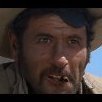
Z-M Messerschmitt Bf109G-14
Martinnfb and 2 others reacted to tucohoward for a topic
Thanks, guys. Well, I ran into my first real fit issue. Probably my fault since I don't recall anyone else complaining about it. If I screwed up I did it on both wings though since the problem was getting the radiator flaps installed. Not sure what happened but I ended up with a fair amount cutting, sanding, filing, etc. to get the hinges to go. I'll pay more attention on the next one. I did get after the painting today and got quite a bit done. Lots of back and forth touching up this, that, and the other but somewhat satisfied. Mostly Mr. Color but also MRP and Tamiya paint as well. Jay3 points



.thumb.png.64af68ce3763f9af8a91e71374ce741e.png)
